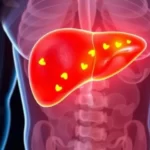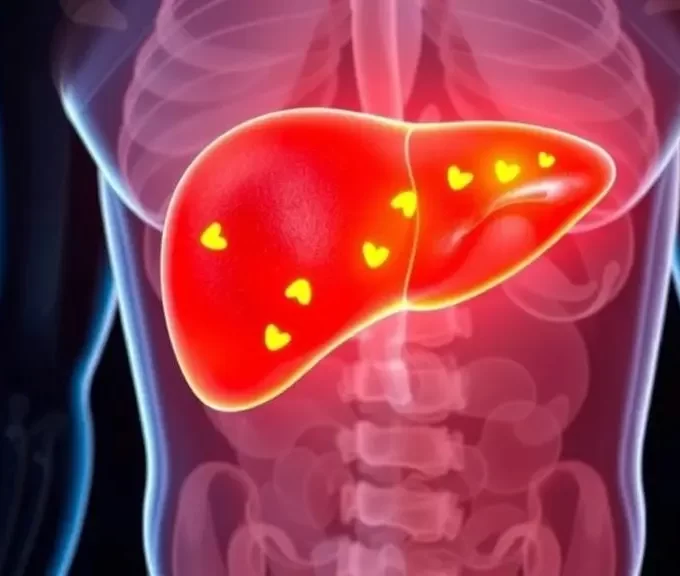Parkinson’s Disease, also referred to as paralysis agitans or shaking palsy, is a complex neurological disorder marked by the gradual degeneration of the central nervous system. Characterized by impaired motor functions and speech, it primarily results from the deterioration of dopamine-producing neurons in a part of the brain known as the substantia nigra. Dopamine plays a pivotal role in regulating movement, and its depletion leads to the classic symptoms associated with the disease.
This progressive disorder affects millions worldwide, with symptoms that can manifest subtly and intensify over time. From difficulties in movement and speech to emotional and cognitive disruptions, Parkinson’s impacts multiple dimensions of a patient’s life. Although conventional treatment offers symptomatic relief, many are now exploring natural modalities such as homeopathy for a gentler and more individualized path to healing.
Historical Background of Parkinson’s Disease
Although symptoms of Parkinson’s have been recognized for centuries, it wasn’t until 1817 that the condition was formally described in detail. In his groundbreaking essay An Essay on the Shaking Palsy, British physician James Parkinson laid the foundation for our modern understanding of the disease. The term “Parkinson’s Disease” was later coined by Jean-Martin Charcot, a notable French neurologist.
Significant strides in understanding its biochemical roots were made in the 1950s when Swedish scientist Arvid Carlsson identified the critical role of dopamine in brain function. This discovery earned him a Nobel Prize and opened new avenues for therapeutic research, both conventional and alternative.
The Pathophysiology of Parkinson’s Disease
At the core of Parkinson’s Disease lies a disturbance in the brain’s dopaminergic system. Neurons responsible for producing dopamine either die or become dysfunctional, thereby reducing the neurotransmitter’s availability. Dopamine is essential for sending signals that coordinate smooth and purposeful muscle movements. Without it, the brain struggles to manage motor control, leading to rigidity, tremors, and slowed movements.
The progression of this disease is gradual but relentless, affecting not just mobility but also emotions, cognition, and daily living capabilities. This comprehensive impact makes early diagnosis and a multi-dimensional treatment approach, such as homeopathy, increasingly vital.
Symptoms of Parkinson’s Disease
Parkinson’s Disease symptoms can vary from person to person, and in its early stages, they may be so mild that they go unnoticed. Typically, symptoms begin on one side of the body and then affect both sides, often remaining more severe on one side.
- Tremors are often the first symptom people notice. They commonly begin in the fingers or hands and appear as a rhythmic back-and-forth motion. A typical presentation is the “pill-rolling” tremor, where the thumb and forefinger rub together involuntarily. Tremors tend to worsen when the person is at rest or feeling stressed and may reduce during voluntary movement.
- Slowed movement, or bradykinesia, makes everyday tasks more difficult. Simple actions like getting out of bed, brushing teeth, or walking can take longer. Facial expressions may become limited, and the person may blink less frequently, which can be misinterpreted as a lack of emotion.
- Muscle rigidity is another common symptom. The stiffness may occur in any part of the body, often resulting in discomfort and limiting the range of motion. Even basic limb movements can feel jerky and unnatural.
- Postural instability becomes a concern as the disease progresses. Many patients develop a stooped posture, and their balance may be affected, increasing the likelihood of falls.
- Loss of automatic movements such as blinking, smiling, or swinging the arms while walking is also observed. These changes are often subtle but can affect social interactions.
- Speech issues can include soft, slurred, or hesitant speech. The tone might become flat or monotone, and patients may struggle to initiate or continue conversations.
- Writing difficulties are commonly reported. Handwriting often becomes cramped or appears unusually small, a symptom known as micrographia.
- Non-motor symptoms are just as important to recognize. Many people experience depression, anxiety, sleep disorders, constipation, urinary urgency, fatigue, and even cognitive decline, such as forgetfulness or trouble concentrating. These symptoms often precede the more noticeable motor issues and can significantly impact quality of life.
Causes of Parkinson’s Disease
Parkinson’s is primarily caused by the gradual breakdown or death of neurons in the brain, particularly those that produce dopamine. Without sufficient dopamine, nerve signals that control movement become erratic and slow. As the disease progresses, levels of norepinephrine, a chemical involved in blood pressure and automatic body functions, also decline, further complicating the condition.
Although the precise cause of Parkinson’s Disease remains unclear, several key factors have been identified:
- Genetic influences are found in a small percentage of cases. Specific genetic mutations are known to increase the risk, particularly in families where multiple members are affected. However, these hereditary forms are rare.
- Environmental exposures such as prolonged contact with herbicides, pesticides, or heavy metals have been linked to higher Parkinson’s risk. Substances like MPTP, a contaminant found in synthetic drugs, have also been shown to cause Parkinson-like symptoms.
- Brain changes include the development of Lewy bodies and abnormal protein clumps found inside nerve cells. These contain alpha-synuclein, a protein that appears in a dysfunctional, clumped form that the body cannot clear. Researchers believe alpha-synuclein may play a central role in the development of the disease.
- Mitochondrial dysfunction is also considered a possible contributor. Mitochondria are the cell’s power plants, and when they are damaged, it can lead to oxidative stress and neuronal death.
Risk Factors for Parkinson’s Disease
While the root causes of Parkinson’s are still being investigated, certain risk factors have been consistently identified:
- Age is the most significant risk factor; the likelihood of developing Parkinson’s increases as people age, especially after the age of 60. Although early-onset Parkinson’s can occur before the age of 50, such cases are rare.
- Genetics plays a role, especially in individuals with one or more first-degree relatives (parents, siblings) who have the condition. However, even with a family history, the overall risk remains relatively low unless multiple relatives are affected.
- Gender is another factor, as men are statistically more likely than women to develop Parkinson’s.
- Environmental exposure to toxins such as herbicides, pesticides, and industrial chemicals may slightly elevate the risk, especially with long-term contact.
Complications That Can Arise
As Parkinson’s Disease progresses, a range of complications can emerge, many of which may require separate management strategies.
- Cognitive decline can become evident in the later stages. Patients may struggle with memory, attention, and language or even develop dementia. While medications offer some relief, their effectiveness is often limited.
- Emotional health often takes a hit. Depression and anxiety are common, even in the early stages. These emotional symptoms are not merely reactions to the disease but part of its neurological impact.
- Swallowing difficulties occur when the muscles involved in chewing and swallowing become weak. This can lead to nutritional issues or choking hazards. Saliva may also accumulate, causing drooling.
- Sleep disorders include frequent awakenings, vivid dreams, and daytime sleepiness. Some patients experience REM sleep behavior disorder, in which they act out their dreams physically, potentially injuring themselves or their bed partner.
Additional complications may include bladder control issues, constipation, blood pressure fluctuations, loss of smell, muscle pain, fatigue, and sexual dysfunction. These symptoms can drastically affect overall comfort and independence.
Preventive Measures
Although Parkinson’s Disease cannot yet be prevented entirely, several lifestyle factors have been associated with lower risk:
- Regular exercise, particularly aerobic workouts, supports brain health and delays the onset of neurological decline.
- Caffeine consumption from sources like coffee and green tea has been linked in some studies to a reduced risk, although this is not universally accepted.
- Anti-inflammatory medications, such as ibuprofen and statins, may offer some protection, though their use should always be medically supervised.
Homeopathy and Parkinson’s Disease: A Personalized Path
Unlike conventional medicine, which typically targets symptom suppression, homeopathy takes a holistic, individualized approach. Each patient is viewed through a unique lens that includes their physical condition, emotional temperament, past medical history, and even their family background. This deep personalization makes homeopathy a promising supportive therapy for managing chronic, multifactorial diseases like Parkinson’s.
Homeopathy operates on the principle of “like cures like,” using ultra-diluted substances that, in a healthy person, would produce symptoms similar to those being treated. Remedies are prescribed only after comprehensive case analysis and must be administered under the supervision of a qualified homeopath.
Homeopathic Remedies Used in Parkinson’s Disease
Homeopathy offers a range of remedies that may help manage Parkinson’s Disease, depending on the patient’s constitution, emotional makeup, and symptom profile. Some of the most frequently indicated remedies include:
- Agaricus muscarinic, known for controlling involuntary movements and tremors; Ambra grisea, often helpful in elderly patients with nervous exhaustion; and Argentum nitricum, useful for cases involving anxiety and unsteady gait.
- Aurum metallicum is chosen for deep depression and suicidal thoughts often linked with neurological decline, while Bufo rana may be suited to those with fits, twitching, and progressive deterioration. Cocculus indicus is indicated when there’s a combination of dizziness, weakness, and mental fatigue.
- Conium maculatum is beneficial for tremors that worsen with rest and improve with movement, and Gelsemium sempervirens support coordination in cases of trembling fatigue. Heloderma is considered for Parkinsonian gait and freezing episodes, while Hyoscyamus niger may help with delusions and erratic behavior.
- Lathyrus sativus addresses spastic paralysis of the lower limbs, and Magnesia phosphorica can relieve muscle cramps and neuralgia pains. Mercurius solubilis, often abbreviated as MERC, is used when there are tremors along with salivation and sensitivity to temperature changes.
- Nux vomica helps patients who are irritable and hypersensitive, especially those who experience muscle stiffness and digestive issues. Phosphorus may be prescribed for trembling with nervous exhaustion. Plumbum metallicum (Plb.) is effective when there is marked muscular atrophy and rigidity.
- Pulsatilla nigricans is suited for gentle, tearful personalities, particularly if symptoms vary or change frequently. Rhus Toxicodendron supports relief from rigidity and pain that improves with motion. Stannum metallicum (Stam.) is ideal when there are marked weaknesses in speech and muscles.
- Tarentula hispanica may be considered for restlessness, rapid movement, and choreic symptoms. Thuja occidentalis is often selected for neurological and miasmatic blocks, and Zincum metallicum (Zinc.) is valuable for fidgety feet, twitching, and mental dullness.
Each of these remedies is selected not solely based on the diagnosis but on the totality of symptoms presented by the individual. A skilled homeopath will take into account every aspect of the patient’s condition, mental, emotional, and physical, before recommending the most appropriate medicine.
Conclusion:
Parkinson’s Disease is a life-altering condition, but with a compassionate and personalized approach like homeopathy, patients can find significant relief from many symptoms. While it may not offer a cure, Parkinson’s Disease Treatment in Homeopathy supports better motor control, emotional balance, and improved quality of life with minimal side effects.
Given its individualized nature, homeopathy should always be administered under professional guidance. The best outcomes occur when patients, caregivers, and practitioners collaborate to tailor a treatment plan that respects the whole person, not just their diagnosis.
Frequently Asked Questions (FAQs)
What should you not do if you have Parkinson’s disease?
Avoid a sedentary lifestyle, skipping medications, and stressful routines. It’s also important not to self-medicate or delay regular check-ups with your neurologist or homeopath.
What is life like for someone with Parkinson’s disease?
Life with Parkinson’s includes physical, emotional, and social challenges. With proper treatment, support, and lifestyle adjustments, many maintain a fulfilling daily routine.
What is the leading cause of Parkinson’s disease?
The primary cause is the loss of dopamine-producing brain cells. Genetics, environmental factors, and oxidative stress may contribute.
What is the life expectancy of a person with Parkinson’s disease?
Most people with Parkinson’s have a near-normal life expectancy, especially with early diagnosis and a well-managed treatment plan.
What foods are high in dopamine for Parkinson’s disease?
Foods like bananas, avocados, nuts, seeds, and dark chocolate can support dopamine production. A balanced diet rich in antioxidants is also beneficial.











